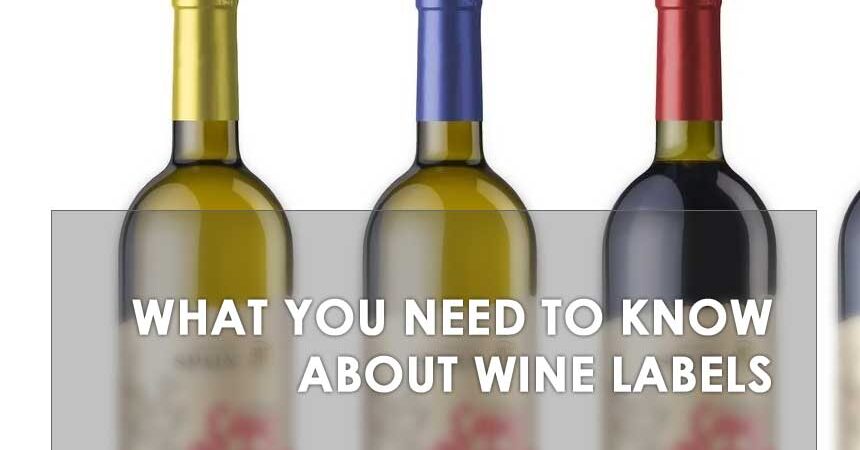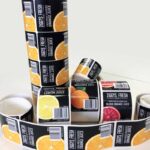What you need to know about wine labels
The modern wine market is characterised by a huge number of producers and brands. However, this makes it very difficult for people without specific preferences to choose a wine brand, as there are dozens or hundreds of brands in each price range. Marketing studies have shown that in such circumstances, the decisive factor is the attractiveness of the label. Researchers claim that if a customer picks up a bottle that catches their eye from the shelf, they are up to 70% more likely to sell it.
Trends in wine labels
- increasing complexity of printing design of label products with wide use of various methods of decoration: lacquering, relief embossing, pressing of foil, die-cutting along a complex contour, etc;
- Increased demand for anti-counterfeiting protection of labels;
- lower print runs (including the need to print labels in different languages);
- development of demand for variable information labels;
- Increased use of self-adhesive materials.
The use of self-adhesive materials for wine labelling is increasing by 20% annually, mainly due to a reduction in the use of dry labels. This trend is visible on all European markets. The increase in the use of self-adhesive labels is due to the following advantages
- ease of application (no risk of adhesive drips and other defects typical of the “wet” process) and the low cost of labelling equipment;
- huge range of materials
- availability of adhesives for all practical applications;
- the ability to use a wide variety of wine label printing and finishing techniques in the production of labels with all operations in-line.
Technological features of wine labelling
Labeling wine bottles is often a technologically demanding task. Particularly demanding are adhesive requirements, as bottles are often varnished to improve their glossiness which makes adhesion more difficult. Since temperature conditions in bottling plants can vary greatly from plant to plant, adhesives must have a wide range of operating temperatures. In addition, in cases where the wine is at a low temperature, the bottle surface may be covered with water condensation.
Wine bottle labelling is mostly done with permanent adhesives, but some manufacturers want to be able to re-label unevenly applied labels. For these, special adhesives have been developed which allow the label to be re-labelled within a few hours and then take on the characteristics of permanent adhesives.
When labelling in humid conditions it is important that the label material is characterised by sufficiently high tear resistance. In the case of wine bottles stored in cellars (high-end red wines) the label material should be moisture-resistant and have an antifungal impregnation. High moisture resistance is also a requirement for the labels on white still and sparkling wines which have to be cooled before consumption, as labels made of non-water-resistant paper can wrinkle. Since sparkling wines are cooled in containers of water and ice, moisture-resistant adhesives should be used to affix the labels.
Special requirements apply to labels for returnable containers. Hot water or an alkaline solution may be used to wash the labels off the bottles. Labels must be permeable but not disintegrate and the adhesive must be water soluble. It should be borne in mind that storage conditions can affect the washability of the labels, in particular rain can wash out water-soluble additives from the adhesive, so wine bottles should not be stored outdoors for long periods of time.
Materials for wine labelling
The most commonly used materials for wine labelling nowadays are:
- classic coated label papers;
- Designer label papers (textured, metallized, pearlescent, etc.)
- synthetic papers
- Polymer films (transparent and opaque, including metallized).
Manufacturers of self-adhesive materials offer papers with various optical properties: matte, semi-matt and glossy, white and coloured, metallized silver and gold, smooth and textured, holographic and pearly… There are even materials which imitate hand-made paper. Self-adhesive paper is widely used to replace dry labels, allowing you to keep the style of label and product you are used to. In particular, classic and textured self-adhesive papers remain the main material for red wine labelling. It should be noted that all self-adhesive papers are moisture-resistant and have an anti-fungal impregnation.
Self-adhesive films made of polypropylene, polyethylene and PET have recently begun to be widely used for labelling white and rosé wines. Transparent films make it possible to create the effect of no label or print on the bottle. Films are often used to market new brands aimed primarily at young people. However, they have even begun to be used in very conservative areas, such as the labeling of Champagne wines in Chardonnay.
Adhesives for wine labels are based on rubber (hotmelts) or acrylic emulsion. Rubber hotmelts are characterized by a high initial adhesion to various materials, including lacquered and wet surfaces, as well as a wide range of operating temperatures. Rubber based adhesives are available in permanent, semi-permanent (allow re-application of the label for a period of time) and removable. Acrylic-based emulsions can be rinsed away with hot water or alkaline solutions, making them suitable for labelling returnable containers.
Would you like a high-quality printing service for your wine labels?
Our company offers wine self-adhesive label printing services. Special terms and conditions on services and materials are available for our customers.


